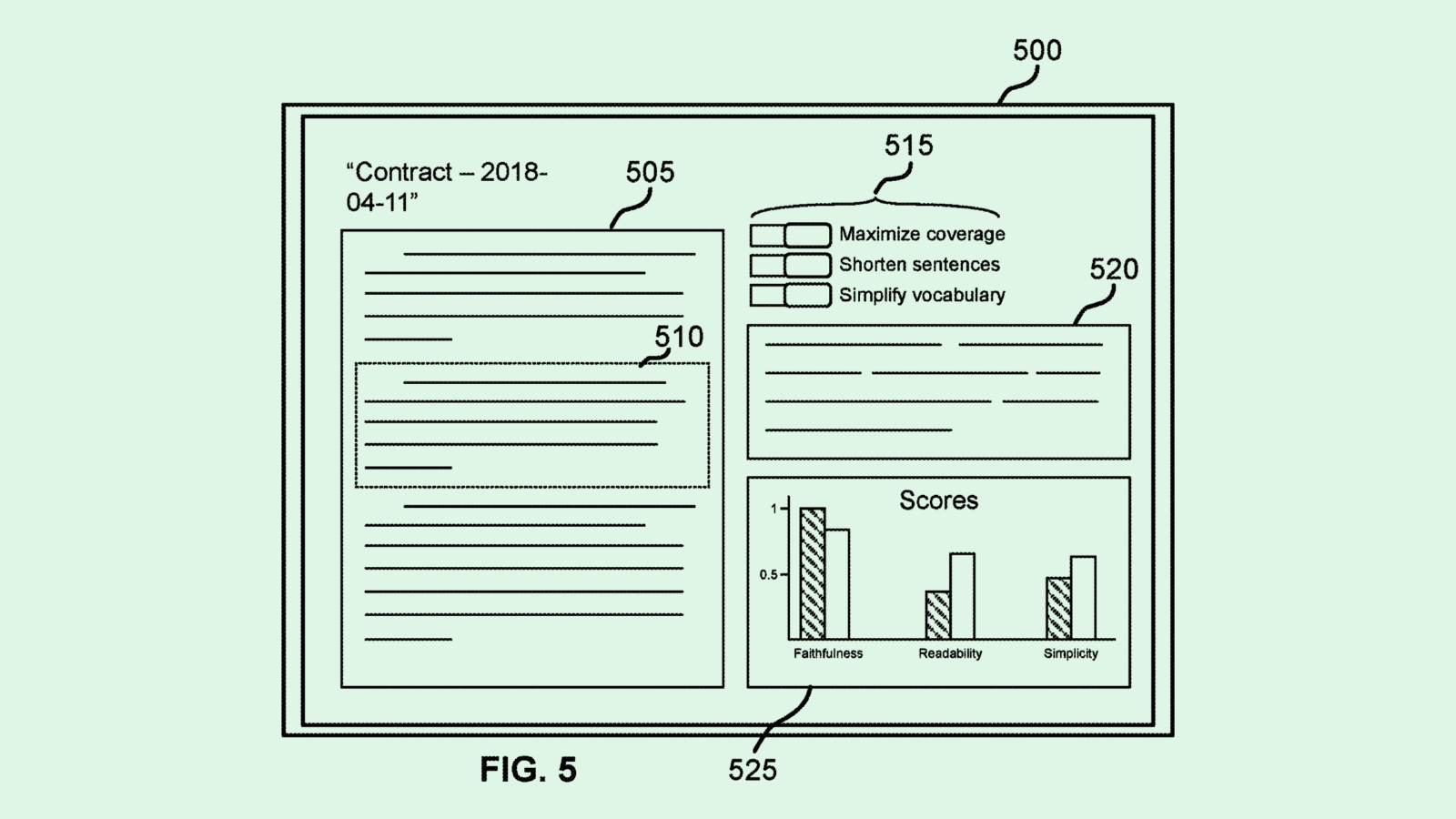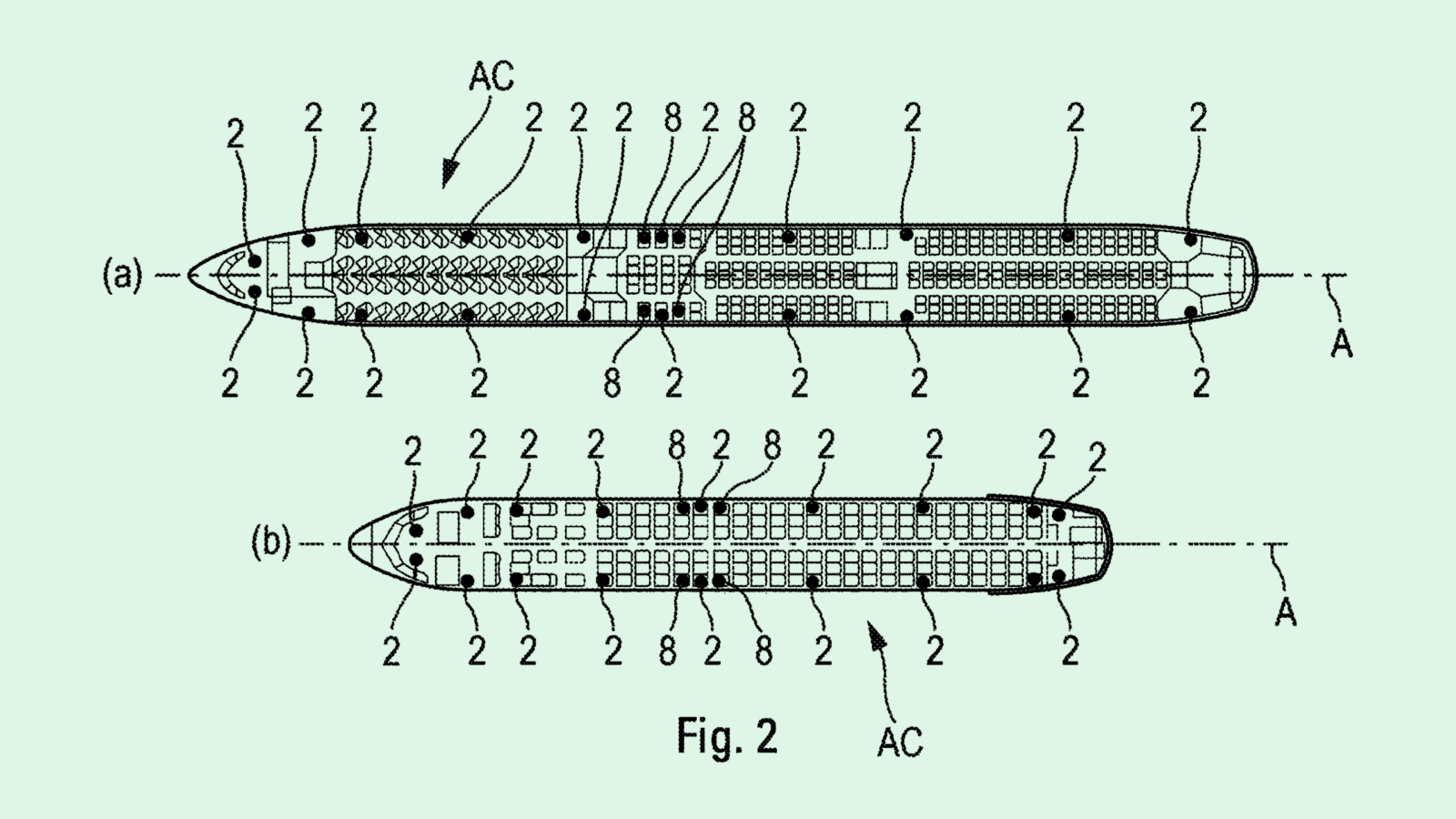Happy Monday and welcome to Patent Drop!
Today, Adobe may have a plan to stamp out the pesky hallucinations that have long plagued AI developers. Plus: Meta may want to put voice assistants everywhere, and Airbus wants to diagnose malfunctions via sound.
Let’s take a peek.
Adobe’s Text Corrector
AI “hallucination” has long stumped developers. Adobe may have found a way to minimize it.
The company is seeking to patent “text simplification with minimal hallucination.” The term refers to when a generative model makes up responses that are inaccurate due to a lack of proper training data. Adobe’s tech aims to break down complex text into small bits while keeping a model from throwing in incorrect statements.
When a model summarizes text, “hallucinations can include new and or inconsistent information with respect to the original text,” Adobe noted. “Such inconsistent information can carry significant consequences in areas such as legal documents and medical documents.”
When Adobe’s summarizing neural network is fed a complex body of text to break down, it is assigned what the filing calls an “entailment score” for each sentence of the summary. This score indicates how well the simplified text corresponds to the complex text it was originally fed.
This score is determined by two main factors: “semantic similarity,” or whether or not any phrases are directly ripped from the complex text, and “hallucination scoring,” or the number of incorrect facts the model included in the summary. If the model’s summarized text does not receive a passing grade, it’s modified using a “pruning component,” which essentially strips the summary of any made-up phrases or redundant text.
Adobe says this text summarizer is configured to “operate without domain-specific training data.” This means that its system can theoretically summarize any category of text, whether it be medical documents, financial filings, or scientific papers, with minimal mistakes.

Even the most competent language models and AI developers struggle with hallucination, said Bob Rogers, PhD, co-founder of BeeKeeperAI and CEO of Oii.ai. OpenAI’s GPT-4 has a hallucination rate of around 3%, whereas other models have around a 5% rate, Rogers noted.
This is because language models often consider the linguistic flow of the text and the correlations between the words they’re writing over the facts themselves, Rogers said. Fact and flow are often only “loosely connected” in these foundational models. “Right now, (language models) really know a lot about how language flows and what linguistic clues lead to word choices,” he said.
While a 3% error rate doesn’t sound like a big deal, it depends on the context in which the model is used. In Adobe’s case, the company’s mastery of both creative and document-related technology could give a summarization tool like this a wide array of use cases.
In creative contexts, the error rate may not be as big of a deal. But if Adobe aims to implement AI tools in a more broad professional context, encompassing fields like medicine, finance, or government, a margin of error that wide is “kind of fatal,” said Rogers. “For a lot of use cases, — medical, financial, legal, national security even — a 3% error rate or hallucination rate is really not safe.”
However, Adobe’s proposed method of catching errors after the copy is created may be an “uphill battle,” Rogers said, as Adobe’s system may not catch when a summary includes information from the original complex text but is still incorrect. Additionally, Adobe’s tool being aimed at summarization makes this even harder, as pulling directly from a body of text, rather than rephrasing, leaves little room for error.
In reality, Rogers said, the best way to tackle these errors is by going back to the drawing board and training AI to connect fact and language. “Once that sort of understanding of facts sort of becomes more embedded in these foundational models, they’re going to be a lot smarter,” Rogers said. “Real solutions to hallucination are going to be the next step change in AI.”
Meta’s Smart Assistant
Every Big Tech firm wants its own voice assistant. Meta is no exception.
The company is seeking to patent methods for implementing “smart assistant systems.” This wide-ranging filing breaks down the inner workings of an AI-based voice assistant system that could be applied across product lines.
The company noted that the assistant may perform “concierge-type services,” provide information based on user input, or perform data-handling tasks based on online information “without user initiation or interaction.”
“The assistant system may be enabled by the combination of computing devices, application programming interfaces (APIs), and the proliferation of applications on user devices,” Meta said in the filing.
Meta’s assistant includes a variety of AI-based tools, including automatic speech recognition and natural language understanding models. The assistant may also understand various “modalities” of user input, meaning it can understand lots of different kinds of data, including audio, text, image, video, motion, and location data.
In addition, Meta’s filing notes that the system may learn from a user’s personal and contextual information to build a personalized profile. For example, this may store a record of user relationships or personal interests. That way, when you ask the system a question, it can fill in answers with more “context-aware understanding.” It may also interact with “different agents,” such as other apps, to get information to solve requests.
When used in the context of extended reality devices such as its headsets, this system may use voice in combination with gestures to understand and respond to commands, like navigating through content menus or changing apps. In a social media context, Meta aims for this system to create a more engaging experience by “providing tools that help the user interact with the online social network,” such as sending messages or interacting with content.
Meta’s filing does address the privacy considerations, noting that this assistant may check a user’s privacy settings before accessing data or executing tasks.

Apple has Siri. Amazon has Alexa. Google has, well, Google. With a patent like this, Meta may be seeking to go the way of the rest of Big Tech, grabbing up IP relating to AI-based personal assistants as these companies continue to bolster their own capabilities.
While Meta once had “Hey Portal,” its voice assistant built into its now-defunct Portal video calling device, the company has long had smart assistant ambitions. In 2022, CEO Mark Zuckerberg touted the company’s plans to develop a voice assistant that could outpace Siri or Alexa for its extended reality experiences. Its Wayfarer smart glasses in collaboration with Ray-Ban also include voice commands activated by “Hey Meta.”
The company has shifted much of its focus to building foundational AI models over the past year. In September, the company released its Meta AI general-purpose chatbot in beta in the U.S. via WhatsApp, Messenger, and Instagram, and has started trialing the tech in other countries in recent weeks. More recently, the company released its own AI chip, is testing out an AI-powered Instagram search bar, and says it and OpenAI are on the brink of releasing AI models that are capable of reasoning.
With the tech in this patent, the company could marry its advanced language models with natural language understanding capabilities, embedding a highly capable voice assistant across its portfolio.
But as with any virtual or voice assistant, privacy risks are always present. For one, consumers already struggle to trust AI. And while Meta addresses privacy risks in the patent by discussing user permissions and local versus server-based processing, the company doesn’t have the best reputation for protecting user data. Plus, Meta disbanded its responsible AI team in November.
Considering the privacy issues that already exist with AI, and Meta’s not-so-stellar data protection reputation, some users may find it difficult to trust an assistant from the company that has access to a well of their personal data.
Airbus Listens Closely
Not all problems can be seen with the naked eye. Some of them require a deft ear.
European aerospace manufacturer Airbus wants to catch these issues with a patent for an “aircraft sound diagnostic method.” This tech allows Airbus to track abnormal sounds or noise levels throughout an aircraft during inspection.
The manufacturer claims that current inspection methods aren’t doing enough to diagnose anomalous noises within aircraft, as “it can be difficult to know the context of an abnormal noise or of an abnormal noise level when a recording is made during a limited time at the moment when the abnormal noise or the abnormal noise level is heard.”
To break it down, Airbus’s method would position several microphones and “vibration sensors” around an aircraft to pick up real-time acoustic and vibrational signals during test flights. Those signals are then sent to a central processor, which generates a sound map based on the signals themselves and the positions of the microphones they came from. The test flight sound map is then compared to a reference sound map, which provides a baseline for normal flight acoustics.
This information is then sent back to the inspector via a real-time display of a graphic representation of the aircraft, which includes the positions of the sensors, the locations where any abnormal sound or vibration signals may have originated, and information about the test flight itself. This system allows Airbus to pin down exactly where any abnormal sounds may come from.

The aerospace manufacturing industry has had more attention in recent months as Boeing, one of the main producers of commercial aircraft, faces endless turmoil relating to its manufacturing and inspection practices following incidents such as a door plug and engine blowouts. Boeing now faces regulator scrutiny and whistleblower reports for its safety practices.
However, as Boeing is Airbus’ main competitor, the bad press seems to be working in its favor. The company delivered 142 planes to customers in the first quarter, around double the output that Boeing reported. The company reaffirmed its output forecast to shareholders last week, on track to deliver 800 planes in 2024.
However, the surge in demand doesn’t come cheap. The company is incurring upfront costs to prepare for the hike in output, investing in thousands of new employees and two additional assembly lines, Boeing Chief Financial Officer Thomas Toepfer told Reuters.
Amid the backlash, looking at more techniques to boost safety and inspection is likely in Airbus’ best interest. This tech may not only allow the company to keep its aircraft safe but also save time and cash as it boosts production and eclipses Boeing.
Extra Drops
- Apple wants you to breathe in for four, out for eight. The company is seeking to patent an “enhanced meditation experience” using “bio-feedback.”
- eBay wants you to rate your shopping experience. The second-hand e-commerce site wants to patent a “service experience score system.”
- Honda may be taking to the sea. The automaker wants to patent a way to navigate a boat “using drone support.”
What Else is New?
- Tesla is cutting around 10% of its global workforce, or roughly 14,000 people. CEO Elon Musk said the move is aimed at “cost reductions and increasing productivity.”
- Adobe released an AI assistant through a $4.99 monthly subscription plan. The tech allows users to ask questions about the contents of documents through a chatbot interface.
- What’s Next in the New Era of Tech: Our friends over at Semafor Tech write a twice weekly newsletter on the people, the money and the ideas at the center of the new era. They keep a finger on the pulse of the shifting dynamics and the new ideas that just might be crazy enough to change the industry as we know it. You can sign up for the newsletter here.*
* Partner
Patent Drop is written by Nat Rubio-Licht. You can find them on Twitter @natrubio__.
Patent Drop is a publication of The Daily Upside. For any questions or comments, feel free to contact us at patentdrop@thedailyupside.com.
